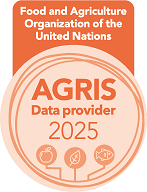Effect of herd size on the effectiveness of an estrus synchronization program based on prostaglandins and artificial insemination after a detected heat in Holstein heifers
Keywords:
Holstein heifers, Prostaglandins, Estrus synchronization, Heat detectionAbstract
The effect of herd size on the response to a protocol of estrous synchronization and artificial insemination (AI) with prostaglandins was evaluated with 821 Holstein heifers 2-3 years old, distributed in two herds, one with 621 heifers (herd 1) and the other with 180 heifers (herd 2). The protocol used was: 0 day: heat detection and AI for 6 days; Day 7: gynecological examination and administration of prostaglandin F2α (PG) to females that were not inseminated and had a corpus luteum (CL), followed by heat detection and AI; Day 18: 11 days after the first treatment, second PG administration to heifers not inseminated with subsequent AI. Overall, heat detection rate (HDR) was 88.2%, conception rate (CR) 66.5%, pregnancy rate (PR) 59.0%. HDR during the 6 days of heat detection was 60.1% and after the first administration of PG 88.0% (P<0.08); after the second PG 36.6% (P<0.0001). Herd size affected negatively HDR (86.4% in herd I vs. 94.4% in herd 2), but not CR or PR.











